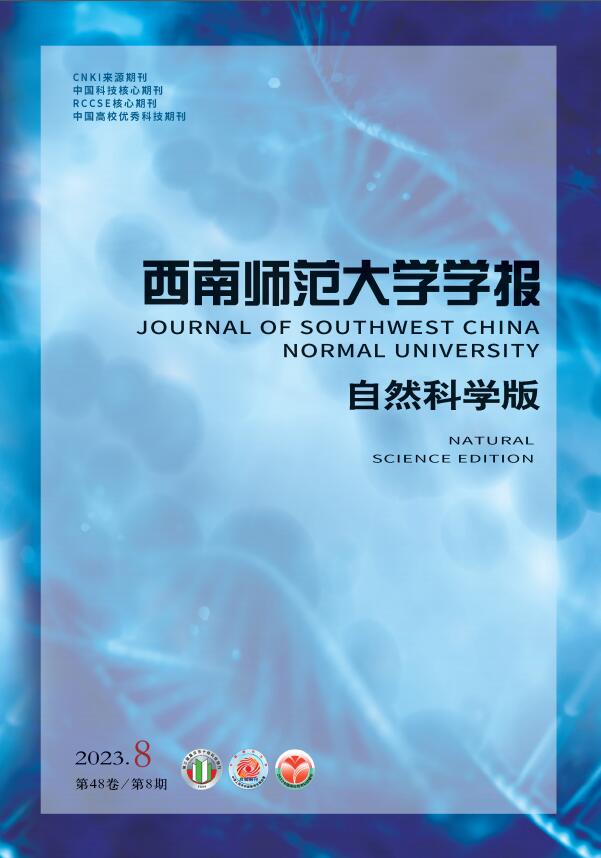-
在一些工程问题中,人们往往需要确定一个物体的表面温度,但又无法在物体表面直接测量,就必须由物体内部某固定位置的温度来反演表面温度,这就是所谓的逆热传导问题,或称为热传导方程的侧边值问题. 这类问题是严重不适定的,许多学者给出了不同的正则化方法,包括最优滤波法[1]、Fourier截断法[2]、拟逆法[3]、谱方法[4]等. 近年来,分数阶微分问题广泛应用于数学界和工程界[5-12], 用分数阶微分方程去阐释热传导过程是一种较为成功的途径. 针对分数阶热传导方程的侧边值问题,本文给出一种分数次Tikhonov正则化方法,此方法既包含了经典Tikhonov方法的优点,又克服了经典Tikhonov解的过度光滑性,而且在做误差估计时也体现了该方法的简洁性. 这种分数次Tikhonnov方法是文献[13]提出的一种新的正则化方法,文献[14]应用这种方法讨论了Helmholtz方程的Cauchy问题,文献[15]讨论时间分数阶反扩散问题时也用到此方法. 本文的方法和结果为解决更复杂的问题奠定了基础.
HTML
-
考虑以下不适定问题:
其中时间分数阶导数
$\frac{\partial^{\alpha} u}{\partial t^{\alpha}}$ 由文献[16]中α(0 < α < 1)阶Caputo导数定义.注1 当α=1时,问题(1)是经典的热传导方程的侧边值问题[17].
实际问题中,我们只能考虑给定在x=x处的温度测量数据gδ(t), 并由它来反演问题(1)在区间(0, x)上的解u(x, t), 其中gδ(t)∈L2($\mathbb{R}$)满足
这里常数δ > 0表示测量误差,‖·‖表示L2-范数.
进一步,我们假设先验界如下:
其中N是给定的正数.
为了在频域中考虑问题(1), 我们将关于t的函数延拓到整个实轴,令t < 0的部分为零. 定义函数f(t)的Fourier变换如下:
相应的函数
$\hat{f}(\xi)$ 的Fourier逆变换为:对问题(1)关于变量t作Fourier变换:
得到问题(8)的解为
其中
令
则η的实部和虚部分别表示为:
因此
根据(9)式得问题(1)的精确解为:
由Parseval等式[18]和条件(5)得:
注意到当|ξ|→∞时
$\mathrm{e}^{\bar{x}} \sqrt{(\mathrm{i} \xi)^{\alpha}} \rightarrow \infty$ 式中精确数据g(t)的Fourier变换$\hat{g}(\xi)$ 必须是快速衰减的,但测量数据gδ(ξ)属于L2($\mathbb{R}$), 其高频部分衰减的速率不会有这么快,这样g(t)的很小扰动就会导致与(9)式对应的$\hat{u}^{\delta}(x, \xi)$ 不存在Fourier逆变换. 为了得到问题(1)的稳定近似解,下面将给出一种分数次Tikhonov正则化方法.
-
我们考虑用分数次Tikhonov正则化方法来解决不适定问题(1). 由(9)式可知
令
因此,
$\hat{u}(x, \xi)$ 可写为在频域空间构造分数次Tikhonov正则化解为:
其中:μ > 0是正则化参数,σ是分数次参数.
接下来为了使证明简便,给出一个辅助引理.
引理1[19] 如果常数μ > 0, 0 < p < q, 对于变量s≥0, 有如下不等式成立:
定理1 设u(x, t)由(13)式给出,且条件(4)和(5)成立,那么当μ被选取为
成立如下误差估计式:
并称uμδ(x, t)为问题(1)的正则化解.
证 由三角不等式和Parseval等式可得
记
$I_{1}=\left\|\hat{u}_{\mu}^{\delta}(x, \bullet)-\hat{u}_{\mu}(x, \bullet)\right\|$ ,$I_{2}=\| \hat{u}_{\mu}(x, ・) -\hat{u}(x, ・) \|$ , 下面分别估计I1, I2,由(15), (16)式可得:
因此,
由(19)式可得
下面考虑I2的估计,并应用先验界(5)得
由(23), (24)式可知
根据(19)式得
故由(20), (25), (26)式得到如下Hölder型最优误差估计式
-
在这一部分将研究后验情况下正则化参数的选择,并且通过Morozov's偏差原理[20]确定一个正则化参数μ满足如下方程:
其中:
$\frac{1}{2} \leqslant \sigma \leqslant 1$ 是常数,μ是正则化参数.下面的结论是明显的.
引理2 设
$\beta(\mu)=\left\|\frac{1}{1+\mu|T(0, \xi)|^{2 \sigma}} \hat{g}^{\delta}(\xi)-\hat{g}^{\delta}(\xi)\right\|$ , 并且$0<\tau \delta<\left\|\hat{g}^{\delta}(\xi)\right\|$ , 则(a) β(μ)为连续函数;
(b)
$\lim\limits_{\mu \rightarrow 0} \beta(\mu)=0$; (c)
$\lim\limits_{\mu \rightarrow 0} \beta(\mu)=\left\|\hat{g}^{\delta}(\xi)\right\|_{L^{2}(\mathbb{R})} ;$ (d) β(μ)为严格单调增函数.
注2 根据引理2可知,若
$0<\tau \delta<\left\|\hat{g}^{\delta}(\xi)\right\|$ , 则方程(27)的解存在且唯一.引理3 若μ满足方程(27), 则有以下不等式成立:
证 由方程(27)和三角不等式得
引理4 若μ满足方程(27), 则得到以下不等式:
证
根据(19)式可得
故
定理2 设条件(4)和先验界(5)成立,且正则化参数μ是通过Morozov's偏差原理(27)确定,则有如下误差估计成立:
其中
$c=\left(\frac{\tau}{\tau-1}\right)^{1-\frac{x}{\bar{x}}}(\tau+1)^{\frac{x}{\bar{x}}}$ .证 令
$I^{2}=\| u(x, \bullet)-u_{\mu}^{\delta}(x$, - $) \|^{2}$ , 由Parseval等式及(28), (29)式可知由Hölder不等式及(23), (24)式可得:
由(19)式可得:
根据引理4可得
因此
令
$c=\left(\frac{\tau}{\tau-1}\right)^{1-\frac{x}{\bar {x}}}(\tau+1)^{\frac{x}{\bar {x}}}$ 得注3 注意到这里仅考虑问题(1)在区间(0, x)上的精确解与正则解之间的误差估计,而未涉及边界x=0的情况,但是,我们通过(21)和(32)式看出,当x=0时,误差估计式不收敛. 若给出先验界‖u(0, ·)‖p≤N, 其中p > 0, N > 0, ‖·‖p表示Hp-范数,则由文献[21-22]知收敛速率呈对数型.
-
不适定问题的种类有很多,需要我们构建正则化方法来解决此问题,每种正则化方法都有各自的优缺点. 本文使用一种新的分数次Tikhonv正则化方法求解分数阶热传导方程的侧边值问题,通过先验和后验的正则化参数的选择得到了Hölder型的误差估计,结果证实了该方法的简洁性和有效性. 这种新的分数次Tikhonov方法也可能适用于Laplace方程的柯西问题等其他不适定问题,这有待于进一步研究.






 DownLoad:
DownLoad: